2005 GMC Envoy

| The Good: – Handsome styling – Offroading ability – Value-loaded features |
The Bad: – Fuel economy – Interior quality – Rearward visibility |
GMC is the only General Motors division that focuses exclusively on solid offroading vehicles that also work well on the street. Years ago, they had been churning out oddities like the rickety Jimmy and the overlong Suburban. However, their current line-up is much more desirable, with the current-generation Yukon models and, more recently, the Envoy range. The Envoy marked GM’s serious involvement in the midsize sport-utility market, giving offroad-capable vehicles like the Toyota Prado and the Jeep Grand Cherokee a run for their money.
The four-wheel-drive Envoy comes in two flavours-a standard wheelbase version and an extended wheelbase version. Both are powered by a rather powerful 275 hp inline-6 engine, but upping the ante is a larger 300 hp V8 motor available only on some models. You might come across ads touting the V8 as having 344 gross hp, so just disregard that as a case of confusing marketing. The only transmission is a capable four-speed automatic, and all local-spec Envoys include a transfer case with selectable low-range gearing, making it a proper offroader.
The standard Envoy, a non-identical twin of the Chevy Trailblazer, is a handsome vehicle, but it used to be criticised for not having a third row seat. GMC addressed the problem by introducing the longer XL version that seats two more people. The XL range includes the basic SLE, the loaded SLT and a dressed-up Denali. General Motors supplied us with a well-outfitted Envoy XL SLT V8, with external extras such as a front grille guard and a rear air deflector. The lengthened vehicle looked peculiar at first, but then we got used to the design.
Climbing up the side steps, the first thing we notice about the interior is how cheap some of the trim materials are, and how cluttered all the controls are. Everything is built out of cheap-looking but noticeably durable plastic, including the simulated wood and metal pieces. As we settled in, we noticed that our SLT was loaded to the brim with luxury car bits. These included slick leather electric seats, cruise control, air-conditioning vents front and rear with digital controls, digital compass in the central rear-view mirror, front and side airbags, excellent Bose CD stereo with redundant steering wheel controls and, to top it off, a ceiling-mounted DVD player with a flip-down screen and dual wireless headsets to entertain rear passengers. The transfer case setting is electronically chosen with a simple dial instead of a gear lever. The trip computer in the gauge cluster displays all kinds of trivia, and seat and mirror positions for two different drivers can be saved in memory. Even the pedals are electrically adjustable. A sunroof and a navigation system are optional. Even though the cost-cutting manufacturing techniques are obvious, there is quite a bit of value packed into this vehicle for the price. The top Denali model doesn’t add much more to the SLT beyond exterior enhancements.
The ergonomics are good, with minor oversights–the front electric seat controls are in a tight spot, the digital trivia display in the gauge cluster is obscured by the steering wheel, and the pedals feel awkward, even after multiple repositioning. Interior dimensions are fairly spacious, especially headroom, although some tall second-row passengers may complain about knee room if the front seats are moved completely back. The third row is okay for medium-sized adults and children, but getting back there could a little tough for non-agile folks. The rear luggage space is enough for two suitcases, but could probably fit a couple of king-size mattresses with the third row seat folded flat, or even more if the second row is folded flat too.
Straight-ahead visibility is excellent, but rearward visibility is severely limited by the multiple rear headrests. The large side mirrors help, but then they hinder frontward visibility during cornering. It helps that people just move away when they see this thing’s big grille guard charging at them.
The standard 4.2-litre inline-6 is very powerful, and quite capable in its own right. With figures of 275 hp and 396 Nm, the naturally smooth sixer is enough to move the standard wheelbase Envoy, but the heavier XL really needs the V8. The 5.3-litre V8 is optional on the XL SLE, and standard on the XL SLT, XL Denali and even the standard-wheelbase Denali. With 300 hp and a claimed 488 Nm on tap, it offers smooth power delivery, immediately ready for action at the press of the throttle, with the four-speed automatic switching gears effortlessly. It still does not turn the Envoy into a BMW X5 chaser, but the torquey V8 is a pleasure to deal with both on and off the road. Fuel economy is expectedly poor, though average in its class, even with the available Displacement-On-Demand feature in the V8 that runs only on 4 cylinders when cruising and supposedly improves consumption by 8%. Thankfully, its cruising range is impressive due to the large fuel tank.
The Envoy rides on a traditionally tough truck chassis, with independent front suspension and a solid rear axle. The chunky offroad-capable tyres mounted on 17-inch wheels, coupled with a comfort-biased setup and the long XL wheelbase, soften on-road ride quality to the point of isolation. The drive is whisper quiet right up to 100 kph, after which wind noise gradually increases. The luxurious highway cruising capabilities of this truck-based 4WD are surprisingly car-like. What it fails in are cornering capabilities, leaning like a speedboat at every medium-speed curve. The 4WD system and wide tyres offer good traction but there is only so much they can do with the bouncy suspension on the tarmac. Braking ability is decent for such a heavyweight.
The suspension’s inabilities on the road translate to excellence off the road. For one reason or the other, our GM-supplied tester was only third-party insured, making us responsible for any damage, so we were initially hesitant to risk our wallets. After hours of boring ourselves on the highway, we threw caution out the window and threw the Envoy XL onto some serious terrain. We have to say it is very capable on the dunes if the long wheelbase is compensated for during the jaunt. Going over the peak of a dune requires extra initial speed to make it over without getting stuck. The short front and rear overhangs offer steep climb angles, but we predictably scraped the bottom at the top of a rocky peak. After the altercation, we got on our hands and knees to check the undercarriage for damage. The bottom of the Envoy is very well fortified and there was no sign of any heartache. We’d say that the ultimate offroading Envoy would be the standard-length model with the side steps taken off. The Autotrac electronic transfer case is easy to use, with choices for two-wheel-drive, all-wheel-drive, and high or low range four-wheel-drive. Mind you, the Denali version is actually lowered in height for styling reasons and may not do too well on an offroad excursion.
If utility and capability takes priority over interior aesthetics, the Envoy XL represents great value for money. Even though the XL is overly long, its convenient width makes it feasible to manage on congested streets as well as park in tight spaces. It offers more space and power than a Toyota Land Cruiser, and better offroadability and durability than a BMW X5. With available options like leather, DVD player and navigation system, the Envoy can be outfitted into a reasonable luxury road cruiser that can even tackle dunes during a family safari.
| Price Range: Dh 87,000-132,000 Current Model Introduced in: Body Styles: Engines: Transmissions: Setup: Suspension: |
Brakes: Front: discs Rear: discs Curb Weight: Length: Wheelbase: Top Speed: Test Acceleration 0-100 kph: Observed Test Fuel Economy: |
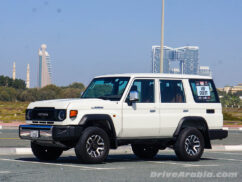
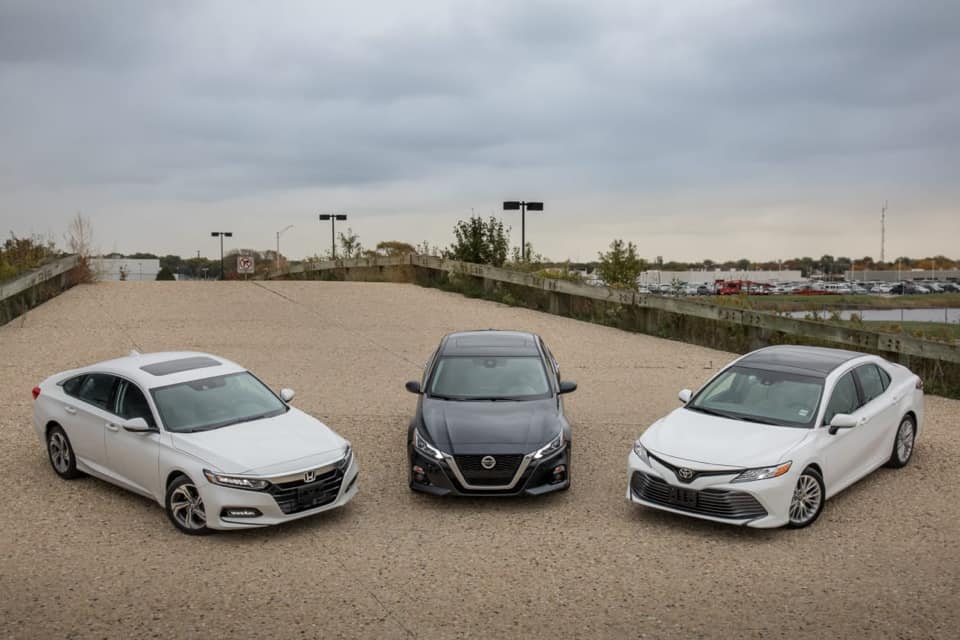
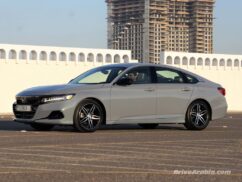
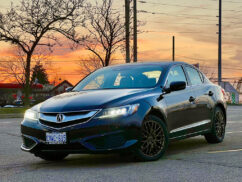
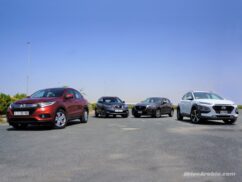
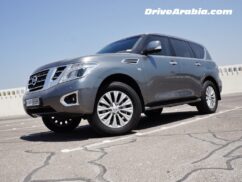
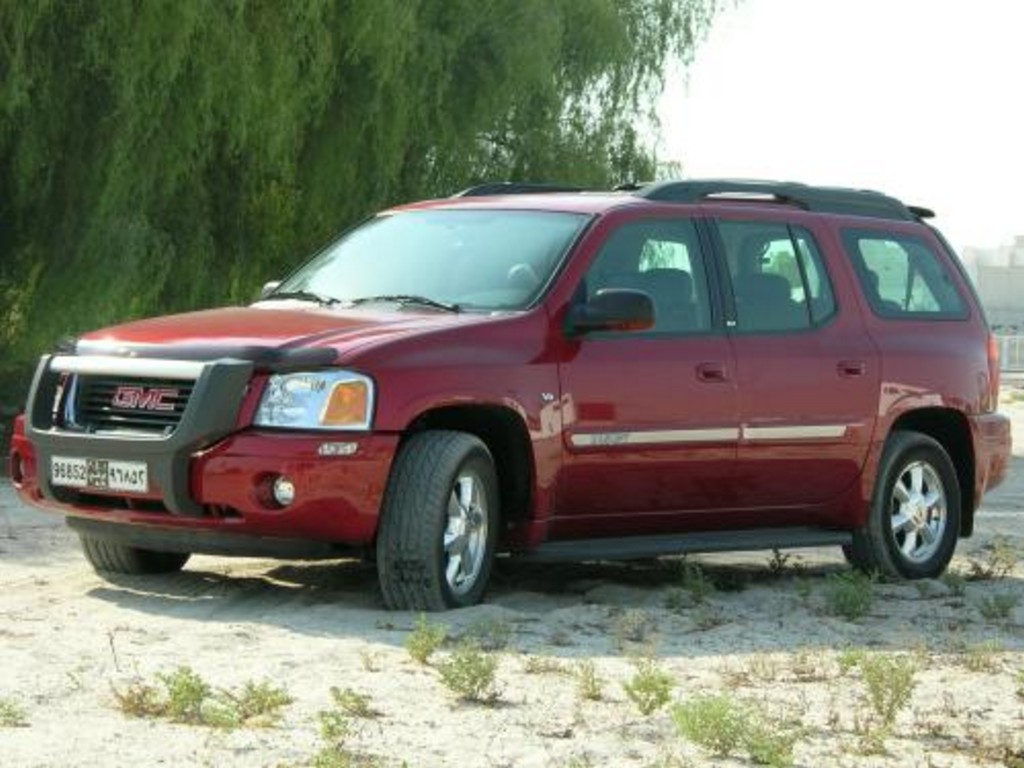
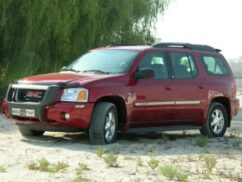
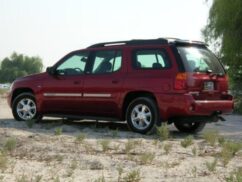
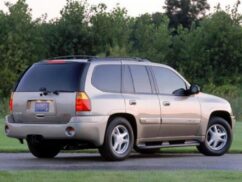
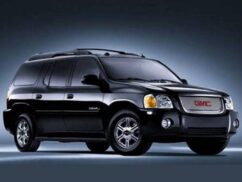
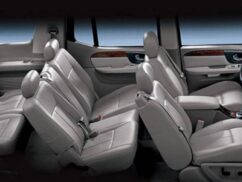
There are no comments. Be the first!